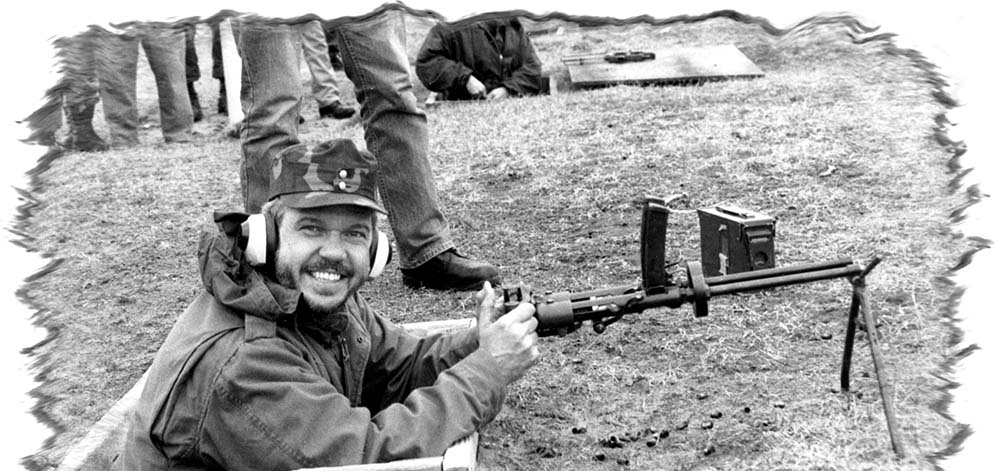The author at the conclusion of two long burststhrough the Villar Perosa.
By Finn Nielsen
The introduction of the machinegun in the late 1880s revolutionized warfare to some extent. Once it was realized that these guns were not to be handled or expected to perform as artillery their use brought about trench warfare, by necessity. The war between Japan and Russia in 1905 saw troops bogged down in deep trenches, as any movement on a large scale caused terrible losses from dug in machineguns. A light, man- portable, rifle-calibered machinegun was available in 1905. This was the Danish Madsen, which saw some use in that conflict, although mostly by Russian cavalry.
The idea of a high volume of fire in a pistol-calibered weapon had been approached somewhat in the development of the Ml896 Mauser ‘Broomhandle’, but this weapon was not to be produced in selective-fire, large capacity magazine versions until the l920s. Its complexity and cost ruled out issue of these on a large scale.
Thus when World War 1 broke out in Europe in August of l914 the submachinegun, as we know it today, did not exist.
On 23 May of 1915, Italy entered the war against the central powers. While the Italians outnumbered their Austrian opponents by a comfortable margin, the terrain in which they had to fight was totally against them. The expression ‘uphill battle’ was completely true here. From June to December that year the Italians lost over 278 000 men in what were mostly fruitless attacks. Despite the fact that the terrain favoured artillery and long range machinegun fire to cover or defend against attacks, a man portable, pistol caliber ‘submachinegun’ still made its appearance in 1915. It was the Villar-Perosa.
Designed by Revelli, who was also responsible for other interesting machinegun designs, it became known as the ‘V.P. 1915’ and also the ‘Fiat’, after one of the factories which made it. It is alleged that it was also manufactured here in Toronto in l917 and 18, however, I have never seen any (having seen only three!) with markings which might indicate that was the case.
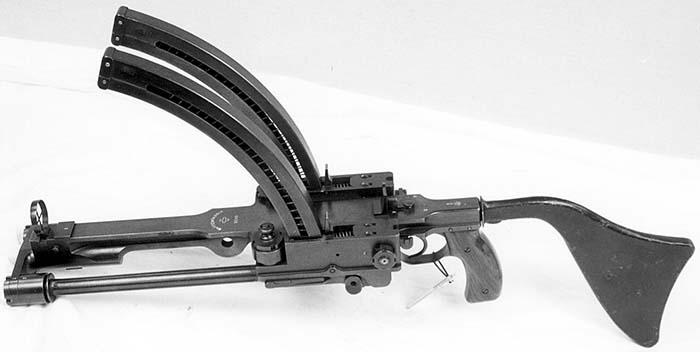
The terrain described above was mountainous. The Carnic and Julian Alps provided ideal defensive positions and a man-portable, rifle-caliber, light machinegun was what was needed. The poor 9mm pistol-caliber V.P was thrust into the light machinegun role for which it was totally unsuited because of the lack of power of its cartridge.
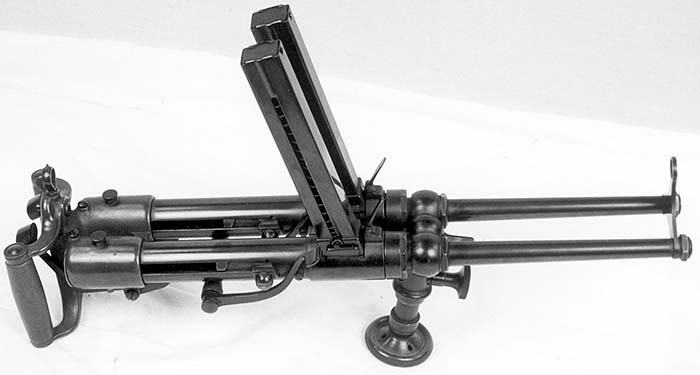
It took some time but the Italians finally realized that the long-range machinegun role was not for the V.P. The V.P. was then used in the assault role that it did a little better at due to its reasonable portability and very high rate of fire. The V.P. was actually two guns in one. They were mounted side by side (side by each?) with spade grips and two buttons/triggers, similar to heavy machineguns. Some were equipped with a bipod and others with an attached square shield.
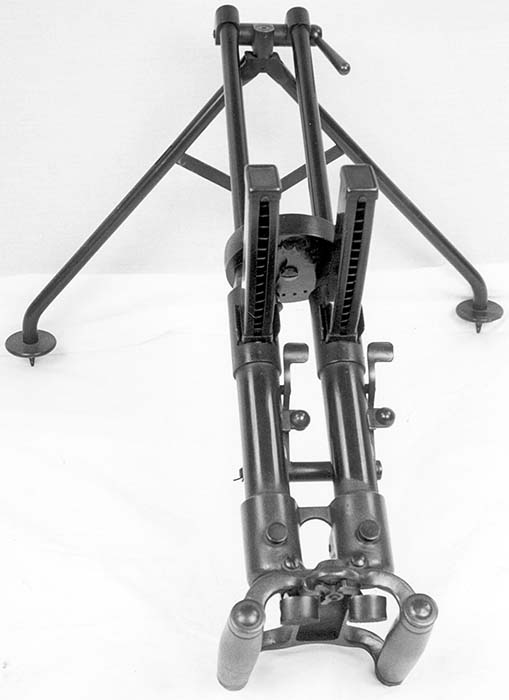
The system of operation has been described as delayed blowback, but more accurately might be described as ‘advanced primer ignition’. The cartridge is fired before it is fully chambered and thus has to overcome the forward motion of the bolt before it can begin to push it back. The simplest of systems, you can find variations of it in most of your low -powered cartridge semi-autos.
The V.P. I had the opportunity to examine was the version with the bipod and no shield. It is actually a very short unit, 21 inches in overall length, and weighs in at some 16 pounds with two loaded 25 round magazines in place.
They were supposed to be chambered for 9mm parabellum cartridges, but given the age of the weapon, and the fact it might have been meant to shoot the lower powered Glisenti round, the owner used lead projectile handloads loaded below 1000 f.p.s. They worked just fine.
Control of your fire is something else. There is no selector, it is full auto only. A twenty-five round magazine coupled with a rate of fire of well over 1000 rpms just doesn’t last long!
The magazines are easy to charge being a staggered row, a design which I could never understand why other nations early on did not copy. Sub machineguns such as the MP28 and its copies, and other foreign weapons went with the single row feed and the attendant pain of having to use a loader to fill them. I always thought that the Chinese conversion of the Sten MK II using the easy-to-load PPS 43 magazine made a lot of sense. Of course a Swedish K is only a Sten with a good magazine in it at a different angle!
So the little Villar really pounded out the projectiles, but in the version we had it must have been really cumbersome to run with , set up, and then use it effectively. For sure, ammo carriers would have to have been close behind you.

The Villar Perosa was never a success tactically because of all the limitations that its caliber imposed upon it, but it did serve as the basis for a more effective firearm. The O.V.P., for all intents and purposes is merely a single-barreled V.P. It still has the top mounted magazines, off-set sights and the high rate of fire. Cocking is accomplished by the use of a knurled sleeve around the receiver which must be pulled back and pushed forward to make it ready for firing. Apparently most of the V.P. units were converted to this version and thus the one that I fired is uncommon.
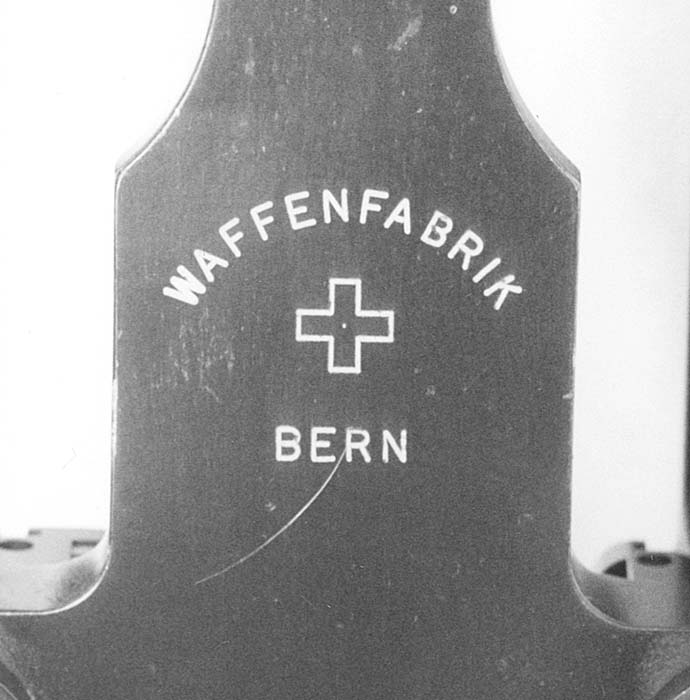
The club that I belong to has demonstrated weapons such as the V.P. and more current small arms to selected groups of The Canadian Armed Forces.
| This article first appeared in Small Arms Review V4N8 (May 2001) |



